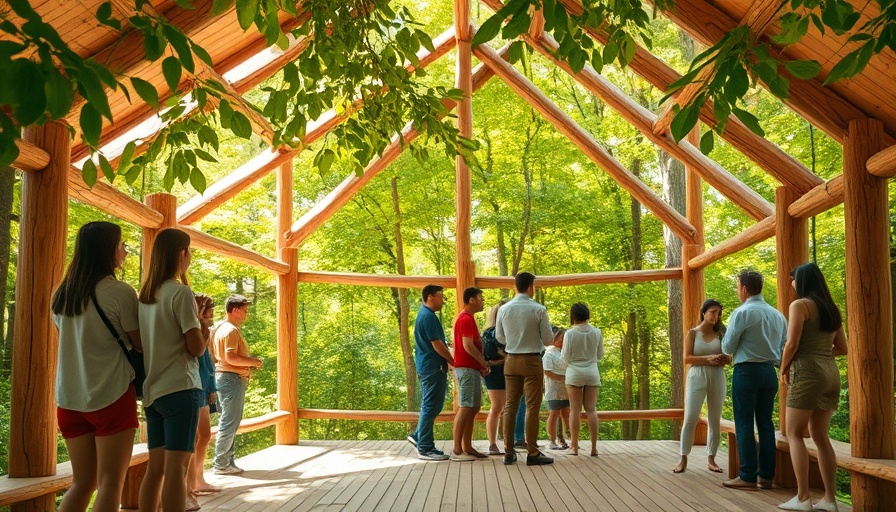
Understanding Slow Architecture: A Return to Meaning
Imagine a space steeped in the cultural fabric of its environment, where each element is carefully considered and constructed both with aesthetics and functionality in mind. The Bruder Klaus Field Chapel in Switzerland, designed by Peter Zumthor, is an exemplary illustration of Slow Architecture, a movement that prioritizes the essence of time, material, and method. This approach mirrors the values of the Slow Food movement, which rose as a response to the rapid pace of modern life. Just as Slow Food encourages mindful consumption through locally sourced and seasonally available ingredients, Slow Architecture advocates for building practices that prioritize natural materials and sustainable methods.
Why Materials Matter: The Ethical Dilemma
At the heart of Slow Architecture lies a profound respect for materials—whether granite, marble, or tile—which are not just construction elements but narratives in their own right. Just as select ingredients in a kitchen tell the story of a region's culture and traditions, the choice of building materials can reveal the history and values of a community. Ethical consideration of origin, cultivation, and processing lends depth to an architectural project and fosters a connection between inhabitants and their space.
Connecting Communities Through Construction
The act of building can promote community engagement, as seen with projects involving local residents like the Bruder Klaus Chapel. By using materials sourced from the surrounding environment, architects and contractors don’t just create functional designs; they provide a backdrop for shared experiences and memories. This communal spirit of construction also advocates for responsible practices in the supply chain, ensuring that everyone involved—from architect to installer—is respected and valued through sustainable employment practices.
Looking Forward: A Sustainable Approach to Design
As urbanization continues to increase, the need for sustainable building practices becomes increasingly urgent. Slow Architecture offers a valuable lens through which contemporary design can happen responsibly and ethically. By emphasizing a slow and deliberate approach to planning and construction, we can ensure the longevity of our built environments, enriching both their physical and cultural landscapes. The challenge lies in convincing others within the industry, including fabricators and distributors, to embrace this comprehensive viewpoint, paving the way for a more sustainable future.
Conclusion: Our Responsibility as Designers
Understanding how materials, time, and labor intersect in the built environment equips architects and builders with powerful tools to foster more meaningful spaces. By embracing Slow Architecture principles, we have the opportunity to leave a legacy that honors both our cultural heritage and our commitment to sustainability—a vital step in the right direction for the future of architecture.
 Add Row
Add Row  Add
Add 

 Add Row
Add Row  Add Element
Add Element 






Write A Comment